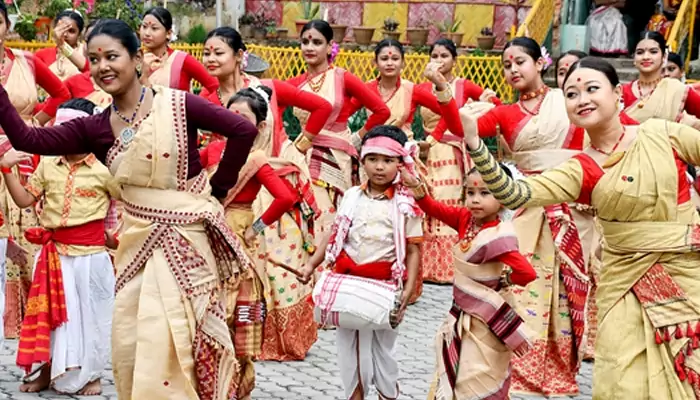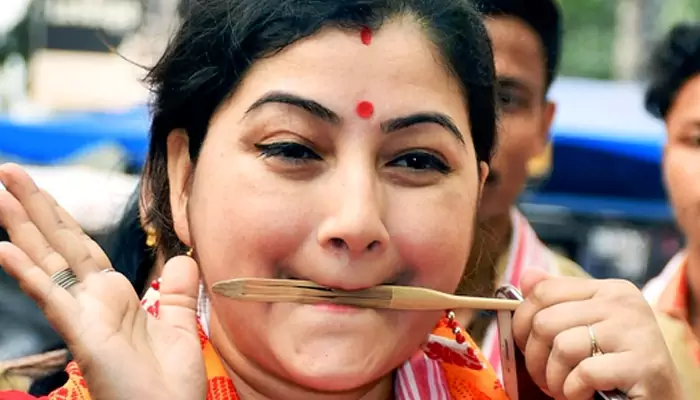
From humble harvest hums to vibrant festival beats—discover how Bihu’s music and dance have grooved through time, keeping Assam’s spirit alive and kicking!
Bihu isn’t just a festival in Assam—it’s a feeling, a celebration of life, love, and the land. And what’s Bihu without its infectious music and spirited dance? Over the centuries, Bihu’s rhythms have transformed, blending tradition with new influences while keeping its soul intact. Let’s take a relaxed stroll through time and see how Bihu’s beats and moves have evolved.
Long before Bihu became the grand spectacle it is today, it was a simple harvest festival. Farmers celebrated the earth’s bounty, and their joy spilled into music and dance. The earliest Bihu songs (Bihu geet) were spontaneous—rustic, raw, and full of emotion.
The dhol (drum), pepa (buffalo horn pipe), and gogona (bamboo jaw harp) were the stars. These weren’t fancy—just tools of the trade, literally. The pepa’s sharp, piercing sound and the dhol’s thunderous beats set the rhythm for dancers.
Early Bihu songs were about daily life—love, farming, nature, and even cheeky flirtations. Nothing was off-limits, making them relatable and fun.
This was Bihu in its purest form—unrehearsed, unfiltered, and full of heart.

As Assam’s culture flourished, so did Bihu. By the medieval period, it wasn’t just a village affair—kings and nobles started embracing it. The music became more structured, and the dance steps got polished.
This was Bihu’s first big upgrade. Groups of singers and dancers (Husori troupes) began performing in courtyards, blessing households. The songs became more devotional, blending folk with classical touches.
The taal (cymbals), xutuli (clay whistle), and bihu toka (bamboo clapper) added more layers to the music. The sound was richer, livelier.
Bihu was no longer just a farmer’s pastime—it was becoming an art form.

Assamese actor Gayatri Mahanta performed on a traditional musical instrument at the opening of the 'Bor Asom' exhibition, a vibrant prelude to Guwahati’s Rongali Bihu festivities.
Then came the British era, and with it, cultural suppression. Traditional festivals were discouraged, and Bihu took a hit. But here’s the thing about Bihu—it doesn’t quit.
People kept Bihu alive in secret, in smaller gatherings. The music became a quiet rebellion, a way to hold onto identity.
When recorded music arrived, Bihu found a new stage. Artists like Khagen Mahanta and Pratima Barua Pandey brought Bihu to the masses, preserving its essence while modernizing it slightly.
Bihu wasn’t just surviving—it was adapting.
Fast forward to today, and Bihu is louder, prouder, and more glamorous than ever. Rongali Bihu (the spring festival) is now a mega-event, with concerts, competitions, and even Bollywood-style performances.

Traditional Bihu music now jams with guitars, keyboards, and electronic beats. Bands like Bihu Crew and artists like Zubeen Garg have given it a contemporary twist.
What was once free-flowing and spontaneous now has choreographed precision. Youth groups perform synchronized Bihu dances, blending classical moves with modern energy.
Bihu isn’t just an Assamese thing anymore—it’s performed worldwide, from Delhi to New York. UNESCO even recognized it as an intangible cultural heritage!
Yet, despite the glitz, the soul remains the same—the dhol still pounds, the pepa still wails, and the dancers still move with the same joy.
What makes Bihu music and dance so special? It’s simple—it’s alive. It changes with the times but never loses its roots. Whether it’s a farmer singing in his field or a star performing on stage, the spirit is identical: pure, unfiltered celebration.
So next time you hear a Bihu song or see the whirl of a dancer’s mekhela chador, remember—you’re not just witnessing a performance. You’re seeing centuries of history, resilience, and joy, all moving to the same timeless rhythm.